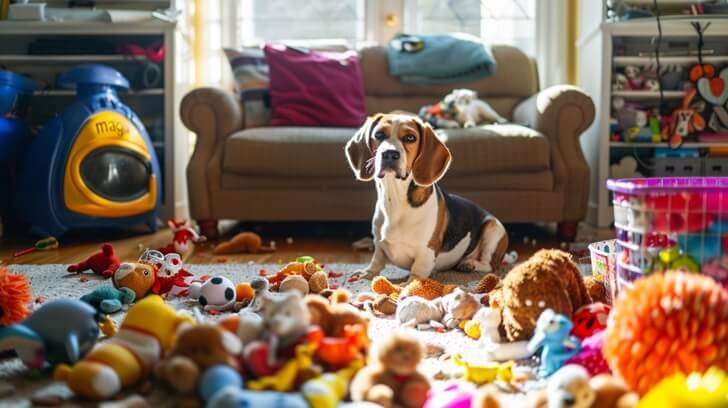
Separation anxiety is a prevalent condition that affects countless dogs, leading to behaviors that can be stressful for both the pet and their owners. Imagine leaving your furry friend at home only to return to find destruction, excessive barking, or even signs of distress like drooling and pacing. Not only does this create an uncomfortable environment, but it can also strain the bond between you and your beloved pet. Understanding the importance of addressing separation anxiety in dogs is crucial for ensuring the well-being of your dog. This article will provide you with proven strategies to combat separation anxiety, helping your dog feel secure when left alone.
Why is it important to tackle separation anxiety? Dogs are social animals, and their natural instinct is to be around their pack—us! When they are left alone, their anxiety can escalate, resulting in unwanted behaviors and health complications. It’s not just about training your dog; it’s about improving their quality of life and fostering a deeper connection between you both. This guide will walk you through effective techniques and practical steps to help your dog become more comfortable during periods of separation. By the end, you’ll have the knowledge to transform your dog’s anxiety into calmness and security.
1. Benefits of Addressing Separation Anxiety in Dogs:

Addressing your dog’s separation anxiety is essential for several reasons, each contributing to the overall well-being of both your pet and your household. Here are five key benefits:
1.1 Improved Mental Health for Your Dog
Dogs suffering from separation anxiety are often stressed, leading to a range of emotional and behavioral issues. Addressing this anxiety creates a more peaceful living environment, which is vital for your dog’s mental health. Chronic stress can manifest as destructive behaviors or even health problems, making it crucial to tackle anxiety head-on. By providing your dog with the tools to cope with separation, you contribute to their emotional stability and overall happiness.
1.2 Strengthening the Bond Between You and Your Dog
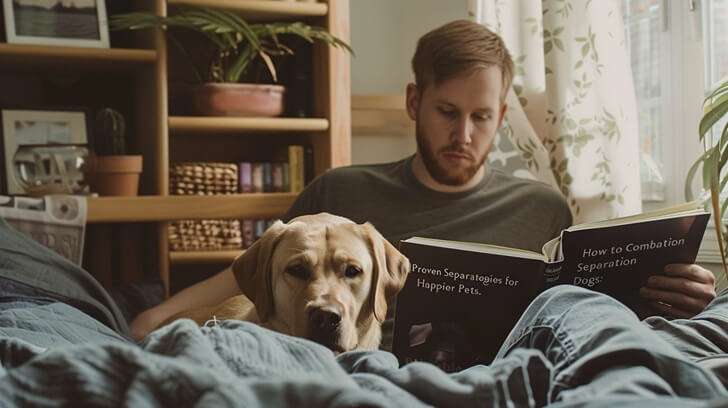
Working to alleviate your dog’s anxiety helps to build trust and strengthen your bond. Dogs that feel secure in their environment are more likely to be affectionate and obedient. A strong bond fosters better communication between you and your pet, leading to a more fulfilling relationship. As you work together to overcome challenges, you will find joy in each other’s companionship.
1.3 Reduced Destructive Behavior
Separation anxiety often results in destructive behaviors such as chewing furniture, digging, or excessive barking. These behaviors not only disrupt your household but also indicate the emotional distress your dog is experiencing. By addressing the root cause of their anxiety, you can significantly reduce these negative behaviors. A calm dog is less likely to engage in activities that can damage your home or create chaos.
1.4 Better Overall Health
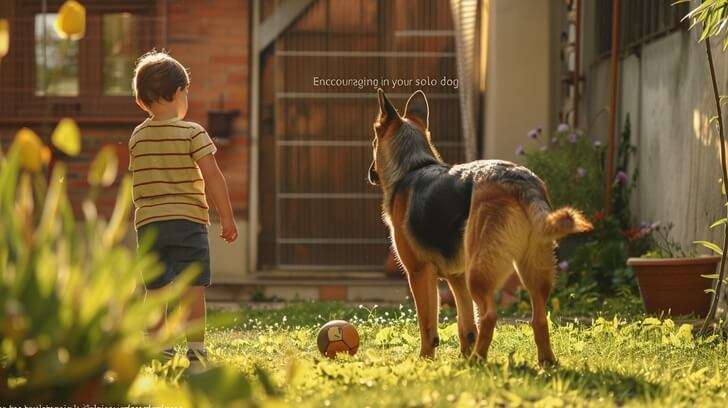
Chronic anxiety can take a toll on your dog’s physical health, weakening their immune system and increasing their vulnerability to illnesses. Stress-related issues can also lead to digestive problems, skin allergies, and other health complications. Helping your dog manage separation anxiety promotes better physical health, which can enhance their quality of life and potentially extend their lifespan.
1.5 Increased Independence for Your Dog
Dogs with separation anxiety often rely heavily on their owners for emotional support, which can hinder their ability to be independent. Addressing this anxiety helps your dog learn to feel comfortable being alone. By fostering independence, you empower your dog to self-soothe and enjoy their own company. This newfound independence not only benefits your dog but also allows you more freedom in your daily life.
2. Step-by-Step Guide to Managing Separation Anxiety:
Managing separation anxiety requires a patient and consistent approach tailored to your dog’s individual needs. Here’s a detailed, step-by-step guide to help your dog feel more comfortable when left alone:
2.1 Step 1: Gradual Desensitization
One of the most effective methods to reduce separation anxiety is gradual desensitization. This involves slowly acclimating your dog to being alone. Start by leaving your dog alone for very short periods—just a few minutes at first—and gradually increase the duration over time. For example:
- Day 1: Leave your dog alone for 5 minutes and return.
- Day 2: Increase to 10 minutes.
- Day 3: Progress to 15 minutes, and so on.
Each time you leave, remain calm and collected. Don’t create a big fuss when leaving or returning, as this can heighten anxiety. Your goal is to normalize the experience of separation.
2.2 Step 2: Create a Safe Space
Providing a safe, comfortable space for your dog is crucial in helping them feel secure when you’re not home. Designate an area in your house that is specifically theirs, filled with familiar items, such as:
- A cozy bed or blanket.
- Favorite toys.
- A piece of your clothing for scent comfort.
This designated safe space should be free from distractions and loud noises, creating a tranquil environment where your dog can relax.
2.3 Step 3: Use Distraction Techniques
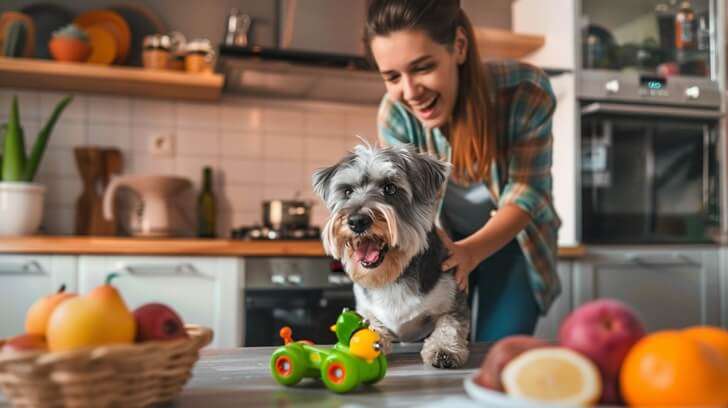
Engaging your dog with distractions can effectively shift their focus away from your absence. Here are some strategies to consider:
- Interactive Toys: Invest in puzzle toys or treat-dispensing toys that can keep your dog occupied while you are away. These toys stimulate your dog’s mind and help them focus on a positive activity rather than their anxiety.
- Calming Music or Sounds: Play soft music or leave the TV on at a low volume. There are even specific playlists designed to soothe dogs, which can create a calming atmosphere during your absence.
- Scented Calming Products: Consider using calming sprays or diffusers containing natural calming scents like lavender or chamomile. These can help to soothe your dog when you leave.
2.4 Step 4: Practice Independence Training
Encouraging your dog to engage in solo activities is essential for building their independence. Start by rewarding your dog for independent play while you’re home. Gradually increase the time they spend playing alone, rewarding them for calm behavior. Some tips include:
- Encouraging Solo Play: Provide toys that encourage independent play. For example, a chew toy or a Kong stuffed with treats can keep your dog busy.
- Short Alone Time While Home: Practice being in a separate room while your dog stays behind. Start with just a few minutes and increase the time gradually, rewarding them for staying calm.
2.5 Step 5: Consider Professional Help
In cases of severe separation anxiety, professional intervention might be necessary. A certified dog trainer or animal behaviorist can assess your dog’s specific needs and develop a personalized training plan. In some situations, your veterinarian may recommend medications or supplements to help manage your dog’s anxiety, especially if it significantly impacts their quality of life.
3. Common Mistakes to Avoid When Addressing Separation Anxiety:
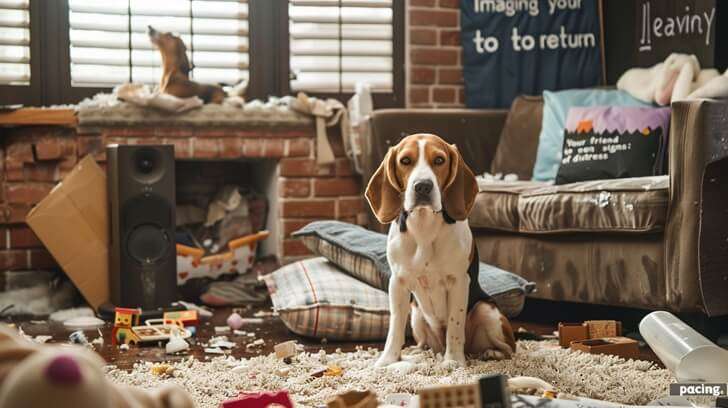
When dealing with separation anxiety, it’s essential to be aware of common mistakes that could hinder your progress. Here are some pitfalls to avoid:
3.1 Punishing Your Dog’s Anxiety-Driven Behavior
Punishing your dog for exhibiting anxious behaviors is counterproductive. Dogs do not respond to punishment in the same way humans do; instead, they may become more anxious or fearful. Focus on positive reinforcement and work on addressing the underlying issues rather than punishing the symptoms.
3.2 Leaving Without a Routine
Dogs thrive on routine and structure. Inconsistent departures can increase anxiety levels. Establish a predictable routine that signals your dog when you’ll be leaving. For example, have a specific command, such as “stay” or “settle,” that signals your departure. Over time, your dog will learn to associate this routine with your absence.
3.3 Not Addressing Underlying Health Issues
Sometimes, what appears to be separation anxiety may stem from underlying health issues. If your dog suddenly develops anxious behaviors, consult your veterinarian to rule out medical problems. Treating any health conditions is crucial before implementing anxiety-specific training methods.
3.4 Too Much Attention Right Before Leaving
Overly affectionate goodbyes can make separation more challenging for your dog. Aim for a low-key departure by avoiding fussing over your dog right before you leave. This helps to minimize anxiety associated with your absence.
4. Scientific Backing:

Scientific research supports the strategies mentioned above, providing evidence for their effectiveness in combating separation anxiety. Here are some key studies that highlight these strategies:
4.1 Gradual Desensitization and Its Efficacy
A study published in the Journal of Veterinary Behavior found that gradual desensitization techniques significantly reduced anxiety-related behaviors in dogs. Dogs exposed to short, controlled periods of separation showed decreased signs of distress over time, validating this method as a successful strategy.
4.2 The Impact of Environmental Enrichment
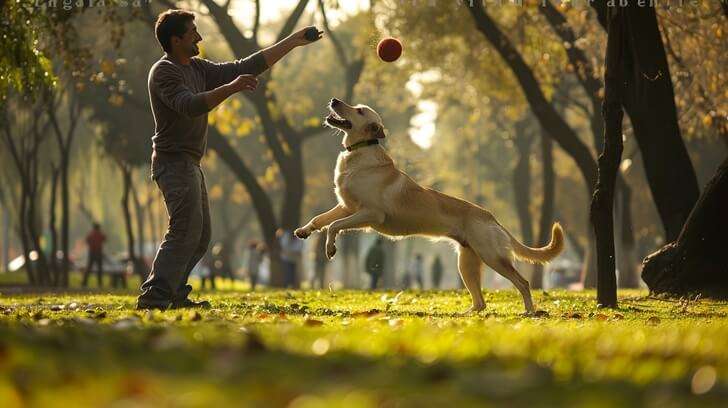
Research conducted by the American Veterinary Medical Association (AVMA) emphasizes the role of environmental enrichment in alleviating stress in anxious pets. Interactive toys, scent diffusers, and providing a secure space contribute to emotional stability, reinforcing the importance of creating a calming environment.
4.3 The Importance of Routine
A study published in Applied Animal Behavior Science highlights the significance of establishing a consistent routine for dogs with separation anxiety. Dogs with structured environments showed lower levels of stress and anxiety compared to those without consistent daily schedules.
5. Conclusion:
Separation anxiety can be challenging for both dogs and their owners, but with patience and the right strategies, it is possible to help your furry friend feel secure when left alone. By gradually desensitizing your dog to separation, creating a safe space, using distraction techniques, and promoting independence, you can significantly reduce their anxiety levels. Remember to avoid common mistakes that could hinder your progress and, if necessary, seek professional guidance.
If you’re looking for more in-depth strategies and expert advice on dog training and behavior, consider purchasing the Dog Trainer Bible. This comprehensive guide provides invaluable insights and techniques that can help you create a better life for your dog. Don’t wait—invest in your dog’s happiness and well-being today!
